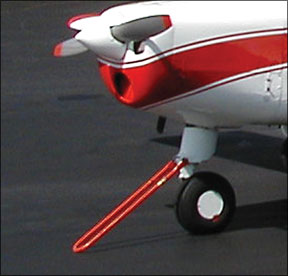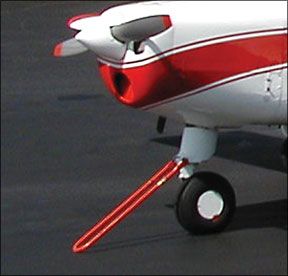I am a student pilot with about 60 hours total time split between a Beech Mentor T-34C, Cessna 172 and my just-purchased personal plane, a Beech Musketeer. I had flown about 20 hours with a CFI in the few months preceding my story, in both a 172 and the Musketeer. I had four flights for a total of about eight hours in the Musketeer. 288 On the fateful flight, we took off normally in marginal VMC conditions. The smoke from several brushfires had cut visibility down to about three to four miles. We had an easy and uneventful flight with a normal takeoff, several ground reference maneuvers, a little GPS familiarization, stalls and slow flight. Nothing was out of the ordinary and the aircraft performed well. Im still trying to get used to the plane and its a 
Upon returning to KMRY (Monterey, Calif.), I requested to remain in the pattern and practice a few touch-and-go landings. The first five touch and goes were uneventful. On the sixth landing, my instructor said, “Your last few landings were high-wait a little longer before turning to base and square off your base leg.”
Abeam the numbers, I pulled power, added carb heat and put in the first notch of flaps. As I turned base, my instructor said, “This is looking much better.”
My response was, “It may look better, but it just doesnt feel right.” As I turned final, I added the second notch of flaps. My instructor said, “Looking good; keep up the good work.” Once again, I said, “It just doesnt feel right.”
Just beyond the numbers, at about 10 feet agl, the plane stalled, dropped abruptly onto the main gear, then “teetered” on the nosewheel before the tire and tube blew and the nosewheel shattered. There was no prop strike and we remained on the runway. A tug and cradle had to be called out to tow us back to the ramp. Neither the CFI nor I were injured, and the aircraft was easily repaired. However, the incident had the potential to be much worse.
I learned if something doesnt feel right (in life or in flight), its probably not. Regardless of how many hours you have or the fact that youre in the plane with an instructor, never, ever accept a low and slow approach. In hindsight, we were on the lower limit of the approach envelope, which is probably why the aircraft “didnt feel right.” I should have gone with my gut feeling and applied power, whether my instructor said to or not. In turn, my instructor probably should have recognized the low and slow approach as well and squeezed in some power.
I dont blame anyone but myself and Im thankful the incident was not more serious. The bottom line is this: If your gut feeling says that something is not right, its probably not. Dont ever settle for a situation that can be improved with a mild addition of power.




